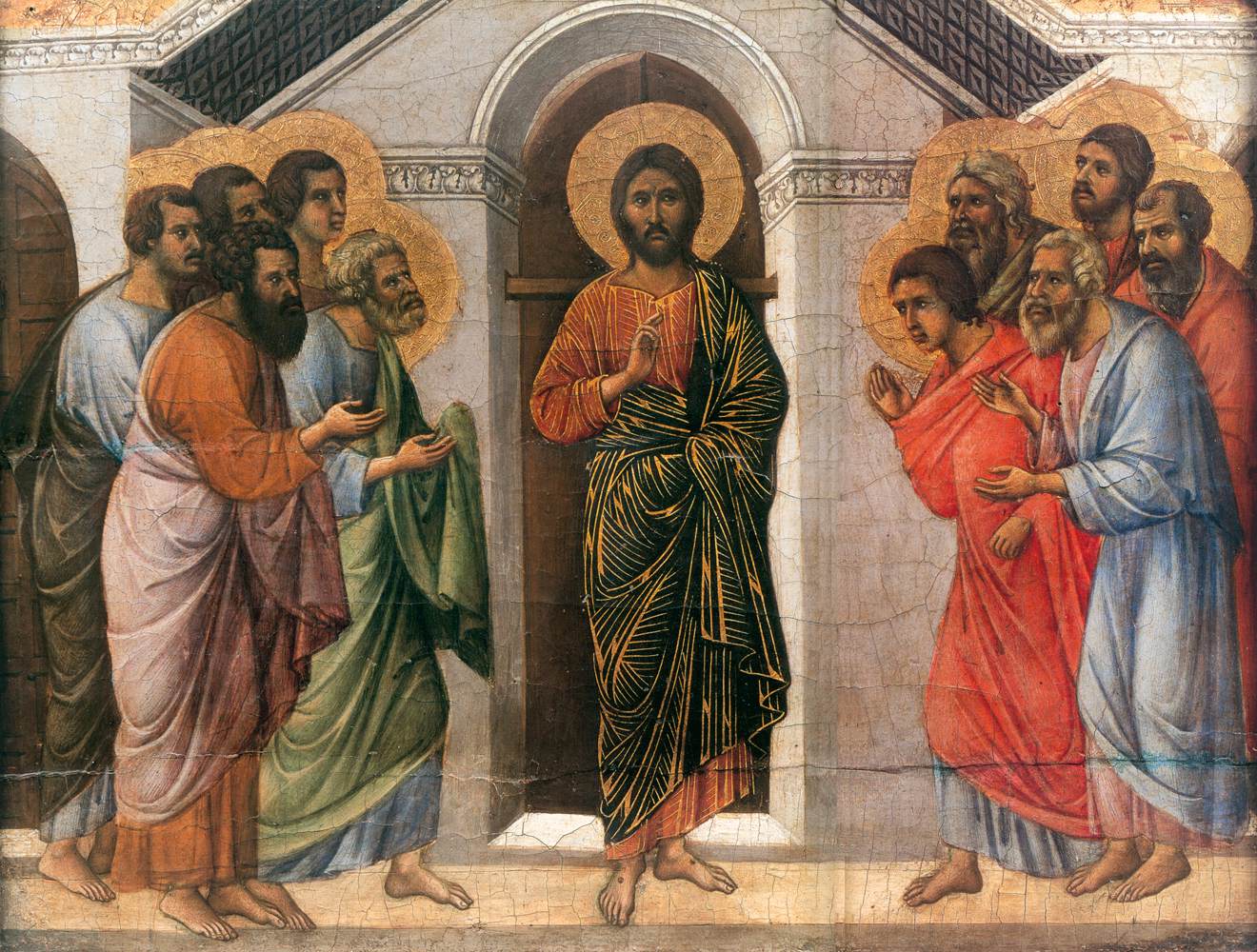Description
The painting "Appearance Behind Locked Doors" by Duccio Di Buoninsegna is a masterpiece of Italian Gothic art of the 13th century. This panel, which measures 40 x 52 cm, is part of a set of four panels depicting the Passion of Christ, located in the National Gallery of Art in Washington DC
Duccio's artistic style is characterized by his attention to detail and his ability to realistically depict human anatomy. In this work, we can see how the artist has captured the tension in the characters' faces and the texture of the fabrics they wear.
The composition of the painting is very interesting, as it shows us a scene that is not frequently depicted in Christian art. We see Christ appearing to his disciples behind the closed doors of the room where they had taken refuge after the crucifixion. The disciples are amazed and excited by the appearance of their teacher.
Color is also an important element in this work. Duccio uses soft, delicate tones to represent the figure of Christ, while the disciples are dressed in brighter colored robes. The background of the painting is dark and austere, which emphasizes the importance of the figure of Christ.
The history of the painting is fascinating, as it is believed to have been commissioned by the Spini family, one of the most powerful families in Siena in the 13th century. The work was created for the family chapel in the church of Santa Maria Novella in Florence, but was transferred to the National Gallery of Art in Washington DC in the 20th century.
Regarding little-known aspects, it is known that Duccio worked on this work for several years and that he used innovative techniques for his time, such as applying layers of gold over the paint to create a luminous effect. Furthermore, it is believed that the figure of Christ was modeled from a wax mold, giving it a more realistic texture.
In short, "Appearance Behind Locked Doors" is an exceptional work of art that combines Duccio's technical skill with innovative composition and a fascinating story. It is a jewel of Italian Gothic art and one of the most important works in the National Gallery of Art in Washington DC

